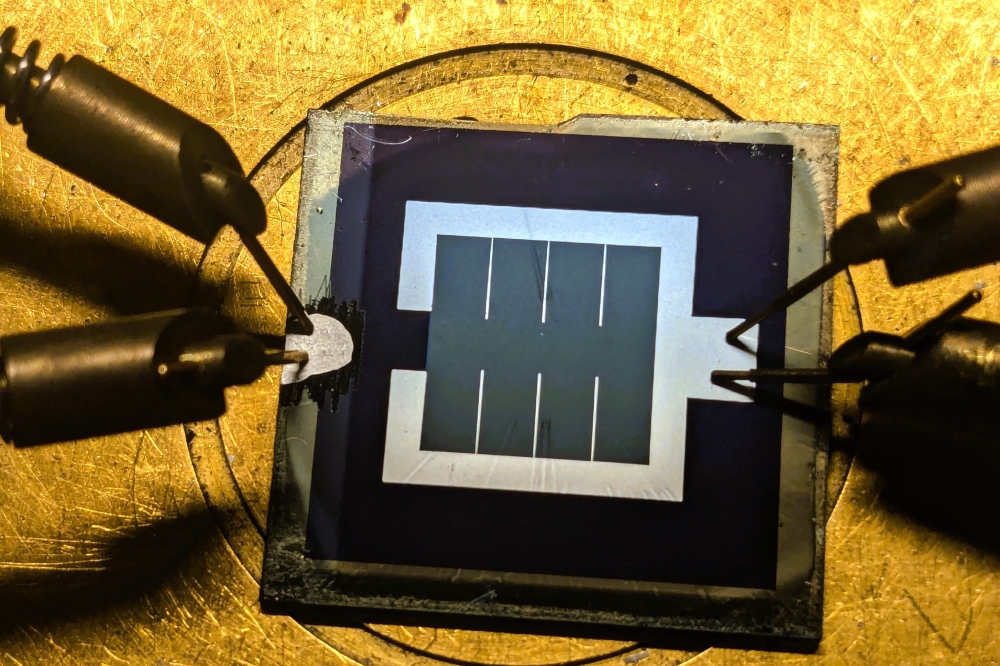Beyond radar

As solid state GaN power amplifiers permeate radar applications, UK developer, Diamond Microwave, is eyeing new markets. Compound Semiconductor reports.
With radar well within its sights, where next for the GaN solid state power amplifier?
Just last month, UK-based Diamond Microwave launched its latest in a rapidly growing line of GaN-on-SiC pulsed solid state power amplifiers that can also operate in continuous wave mode.
The latest 1kW X-band device operates over a 1200MHz bandwidth, at 9.5GHz, is described as ultra-compact and primarily targets the radar applications that traditionally would have relied on travelling wave tube amplifiers.
As Ian Davis, business development manager at Diamond Microwave puts it: "Like all our GaN solid state PAs, these amplifiers employ a chip-and-wire microwave design.... and [have] a power-to-volume ratio that we believe to be among the highest in the industry."
Since it span out from the diamond electronics team of synthetic diamond materials developer, Element Six, in 2006, Diamond Microwave has witnessed much change.
Setting out to develop a diamond MESFET for future microwave power modules, chief executive, Richard Lang said at the time: "The technical challenges are high... there is much work to be done to realise a practical device."
And he was right. Five years later, diamond transistor development had dwindled, and as Davis now says: "We successfully demonstrated that the approach most researchers were using to produce a diamond transistor was flawed."
Still, the time wasn't wasted. According to the business development manager, Diamond Microwave had built a GaN power amplifier with the intention of replacing its GaN transistors with diamond-based version.
Clearly, this was never meant to be, but as Davis highlights: "GaN was now emerging as a practical semiconductor material and we had developed a very good GaN amplifier here."
"We won a major contract with a prime defence manufacturer for further development and are now producing GaN solid state power amplifiers."
Displacing technology
Today, radar - both civil and defence - applications are Diamond Microwave's number one market. GaN power devices are steadily displacing travelling wave tube amplifiers at higher and higher frequencies, and the company is chasing the resulting market share.
"Travelling wave tubes have already been displaced for applications under 18GHz and with functional bandwidths up to 10%," says Davis. "And as GaN devices become available to operate at 18GHz, 40GHz and beyond, we can expect the technology to displace the TWTs here as well."
For his part, Davis is convinced Diamond Microwave has an edge over other manufacturers of GaN power amplifiers, such as Korea-based RFHIC and Communications & Power Industries, US.
As he highlights, some competitors tend to source packaged transistors and amplifiers and integrate these into a power amplifier, but Diamond Microwave works with bare die and incorporates additional circuitry for, say, biasing and matching.
"[Competitors] are taking standard products but these aren't matched with the operating bandwidth or maximum power at a particular frequency," he says.
"Our hybrid manufacturing technique using chip and wire has an advantage," he asserts. "We operate with the bare die, and match these to get wider operating bands and higher power levels, and we also make a more compact, light-weight amplifier."
And while the company integrates GaN-on-SiC devices into its amplifiers, it is, as Davis says, 'technology agnostic'.
"We use GaN as it is the best semiconductor when we are looking to reduce size and weight," he says. "But if, say, a packaged LDMOS or GaAs device were more appropriate to solve a problem, then we would use this technology."
5G hope
Looking to the future, Davis reckons Diamond Microwave's future won't be all about radar. The compact lightweight attributes of its devices, combined with the fact that these can operate on continuous wave mode, could open up a whole new market to the company; wireless communications.
GaN power amplifiers are already replacing silicon LDMOS devices in today's basestations. And as Davis points out: "GaN has also been recognised as a key enabler for the hardware that is going to support 5G networks, and certainly with respect to 5G, we have already witnessed a keen interest in GaN."
"The opportunities for us are at the higher power levels of wireless infrastructure and I think GaN could find a place in, say, the local nodes of wireless backhaul networks," he adds. "We have been talking to communications companies and hope to team up and develop [systems] where size, weight and power are important; this is a market we would like to develop."


































